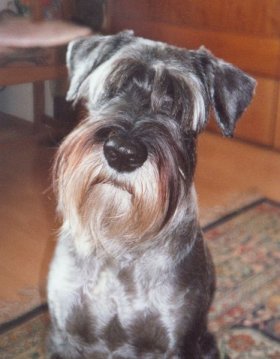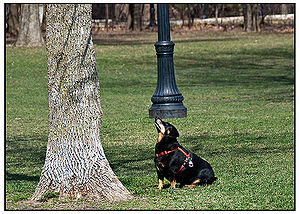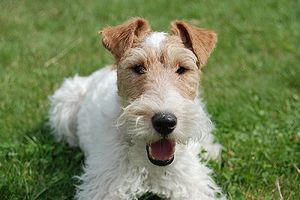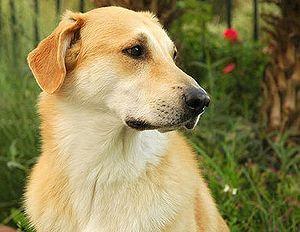 |
| Vital Statistics: |
| Place of Origin: Germany |
| Group: Working dog, Herding |
| Height: males 18-19 in., females 17-18 in. |
| Weight: males 35-50 lbs., females 30-45 lbs. |
| Life span: 13-16 yrs. |
| Trainability: high |
| Good with children: yes, with early socialization |
| Good with other pets: yes, with early socialization, except rodents |
What is the origin of the Standard Schnauzer?
Schnauzer-type dogs were bred in Germany in the 1600s. They guarded farms and hunted vermin. Once called Wirehaired Pinchers, the word Schnauzer refers to the dog’s muzzle with its beard and mustache.
What does the Standard Schnauzer look like?
The Standard Schnauzer is a medium size dog, 17-19 inches tall and weighing 30-50 lbs. depending on gender. The head is rectangular and long. Ears are erect if cropped, v-shaped if uncropped. Eyes are oval with long eyebrows. Feet are small and round. Tail is carried erect and docked. The coat is hard, wiry and thick with a soft undercoat. Colors are pepper and salt or black. The beard and leg hair should be combed 3 times weekhttp://thepetwiki.com/skins/common/images/button_bold.pngly, clipping every 6-8 weeks.
What is the temperament of the Standard Schnauzer?
The Standard Schnauzer is a highly intelligent dog and has been known as a problem solver. They are people-oriented dogs and bond closely with their family. The Schnauzer is quick to learn and enjoys working. It’s important to train and socialize them early to accustom them to young children and strangers. Schnauzers need an owner willing to spend time with them and keep them busy. Exercise should include a vigorous daily walk.
What is the Standard Schnauzer used for?
The Standard Schnauzer will still catch rats, not a good idea to have them around pet rodents. They enjoy all dog sports and do well in them They are good watchdogs and family protectors as well as good companions.
Possible Health Issues
Heart problems (blood vessel that should close after birth does not), neurological compulsive disorder, von Willebrand’s Disease
- Akbash Dog
- Alaskan Malamute
- Anatolian Shepherd Dog
- Appenzell Mountain Dog
- Belgian Malinois
- Boxer
- Burnese Mountain Dog
- Canaan Dog
- Chinook
- Deutscher (German) Pinscher
- Doberman Pinscher
- Dogue de Bordeaux
- Estrela Mountain Dog
- German Spitz (Giant, Standard, Toy)
- Giant Schnauzer
- Great Dane
- Greater Swiss Mountain Dog
- Greenland
- Irish Red & White Setter
- Kai Ken
- Korean Jindo Dog
- Kuvasz
- Laika
- Leonberger
- Newfoundland
- Norwegian Elkhound
- Rat Terrier
- Rottweiler
- Saint Bernard
- Samoyed
- Siberian Husky
- Tibetan Mastiff
- Australian Cattle Dog
- Australian Kelpie
- Australian Shepherd
- Bearded Collie
- Beauceron
- Belgian Sheepdog – Groenendael
- Belgian Tervuren
- Bergamasco
- Berger Picard
- Blue Lacy
- Border Collie
- Bouvier des Flandres
- Briard
- Cardigan Welsh Corgi
- Catahoula Leopard Dog
- Collie
- English Shepherd
- Entlebucher
- Finnish Lapphund
- German Shepherd
- Hovawart
- Icelandic Sheepdog
- Laika
- Lancashire Heeler
- Miniature American Shepherd
- Mudi
- Old English Sheepdog
- Pembroke Welsh Corgi
- Polish Lowland Sheepdog
- Puli
- Pumi
- Pyrenean Shepherd
- Shetland Sheepdog
- Swedish Vallhund
- Affenpinscher
- Boxer
- Dachshund
- Deutscher (German) Pinscher
- Doberman Pinscher
- Eurasier
- German Shepherd
- German Shorthaired Pointer
- German Spitz (Giant, Standard, Toy)
- Giant Schnauzer
- Great Dane
- Hovawart
- Leonberger
- Miniature Pinscher
- Miniature Schnauzer
- Pomeranian
- Poodle
- Pudelpointer
- Rottweiler
- Weimaraner



